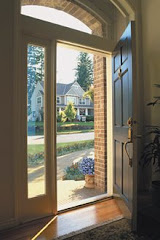Nationwide housing starts declined 5.0 percent to a seasonally adjusted annual rate of 571,000 units in August, according to figures released by the U.S. Commerce Department today. The decline was primarily on the more volatile multifamily side, with single-family housing production edging down just 1.4 percent. Meanwhile, permits for new construction posted modest gains in both sectors.
"At this point, most builders are only looking to replenish their depleted inventories of new homes for sale, but otherwise holding off on new projects," said National Association of Home Builders (NAHB) Chairman Bob Nielsen, a home builder from Reno, Nev. "While we would like to get more crews back on the job, we need to see solid improvement in consumer demand, greater access to credit for both builders and buyers, and a reduction in the number of foreclosed properties on the market before we can ramp up new production."
"Today's numbers are completely consistent with NAHB's forecast for the quarter, and are in keeping with the anemic economic and job growth we are seeing across most of the country," said NAHB Senior Economist Robert Denk. "That said, we continue to anticipate modest gains in new-home production through the end of this year with greater momentum building into 2013, and some pockets of improvement are already evident in about a dozen metros nationwide."
Single-family housing starts declined 1.4 percent to a seasonally adjusted annual rate of 417,000 units in August, while multifamily production – which tends to display greater volatility on a month to month basis – declined 13.5 percent to a 154,000-unit rate. Regionally, combined starts activity was mixed in August, with the Midwest and West posting gains of 2.6 percent and 2.2 percent, respectively, and the Northeast and South posting declines of 29.1 percent and 3.3 percent, respectively.
Building permits, which can be an indicator of future building activity, rose 3.2 percent to a seasonally adjusted annual rate of 620,000 units in August, their highest level since last December. Single-family permits gained 2.5 percent to 413,000 units, while multifamily permits gained 4.5 percent to 207,000 units.
Friday, September 23, 2011
Tuesday, September 13, 2011
New index tracks metros with growth in real estate prices, permits and jobs
After enduring what has seemed like an endless string of dismal numbers reports, the housing industry is about to get some good news. Tuesday, the National Association of Home Builders (NAHB) launched the NAHB/First American Improving Markets Index (IMI), dedicated entirely to tracking metropolitan areas that have consistently shown signs of improvement.
To make the list, a metro area must have shown at least six months of improvement from its trough in three areas the NAHB sees as key to determining the pulse of the housing market: housing permits, employment, and home prices.
To be released monthly, the index will draw its data from the Bureau of Labor Statistics for employment growth numbers, house-price appreciation data from Freddie Mac, and single-family permit numbers from the U.S. Census Bureau.
"Housing conditions are local and do not always reflect the national picture," said Bob Nielsen, NAHB chairman, in a release. "We created this new index to shine a light on those housing markets across the country that have stabilized and have begun to show signs of recovery."
This month, 12 metro areas made the cut: Alexandria, La.; Anchorage, Alaska.; Bangor, Maine; Bismarck, N.D.; Casper, Wyo.; Fairbanks, Alaska.; Fayetteville, N.C.; Houma, La.; Midland, Texas; New Orleans; Pittsburgh; and Waco, Texas.
"It’s not surprising that many of the states represented are energy-rich areas," observed David Crowe, the NAHB’s chief economist. Still, he points out, "last year at this time, there was not a single market that showed improvement using these criteria."
To make the list, a metro area must have shown at least six months of improvement from its trough in three areas the NAHB sees as key to determining the pulse of the housing market: housing permits, employment, and home prices.
To be released monthly, the index will draw its data from the Bureau of Labor Statistics for employment growth numbers, house-price appreciation data from Freddie Mac, and single-family permit numbers from the U.S. Census Bureau.
"Housing conditions are local and do not always reflect the national picture," said Bob Nielsen, NAHB chairman, in a release. "We created this new index to shine a light on those housing markets across the country that have stabilized and have begun to show signs of recovery."
This month, 12 metro areas made the cut: Alexandria, La.; Anchorage, Alaska.; Bangor, Maine; Bismarck, N.D.; Casper, Wyo.; Fairbanks, Alaska.; Fayetteville, N.C.; Houma, La.; Midland, Texas; New Orleans; Pittsburgh; and Waco, Texas.
"It’s not surprising that many of the states represented are energy-rich areas," observed David Crowe, the NAHB’s chief economist. Still, he points out, "last year at this time, there was not a single market that showed improvement using these criteria."
Subscribe to:
Posts (Atom)



